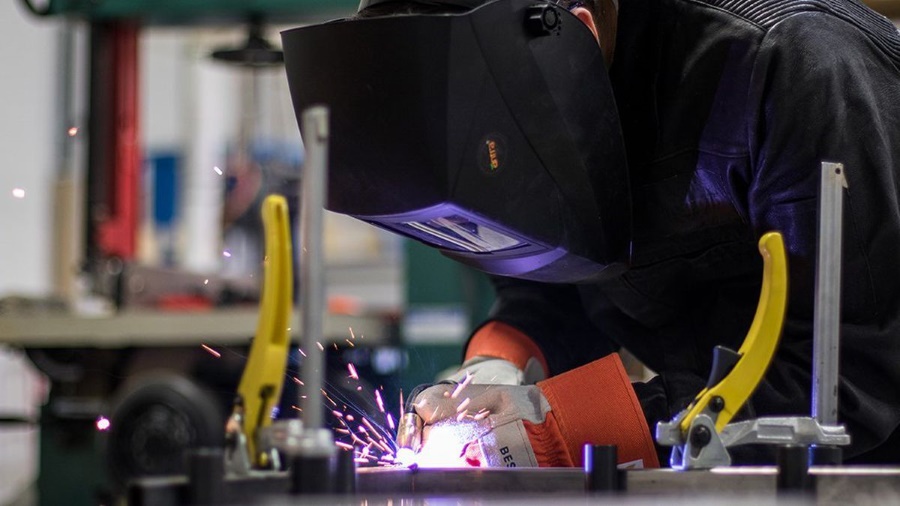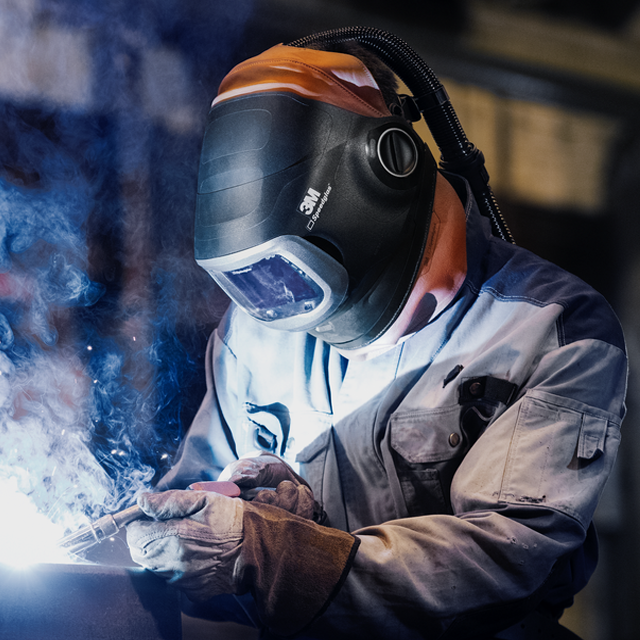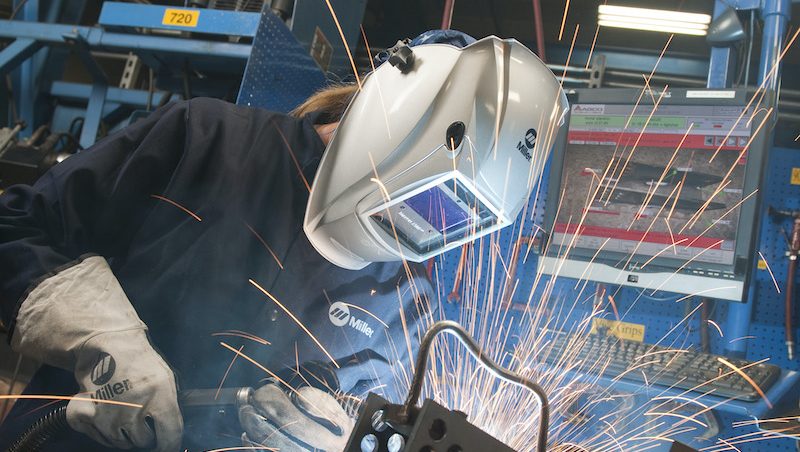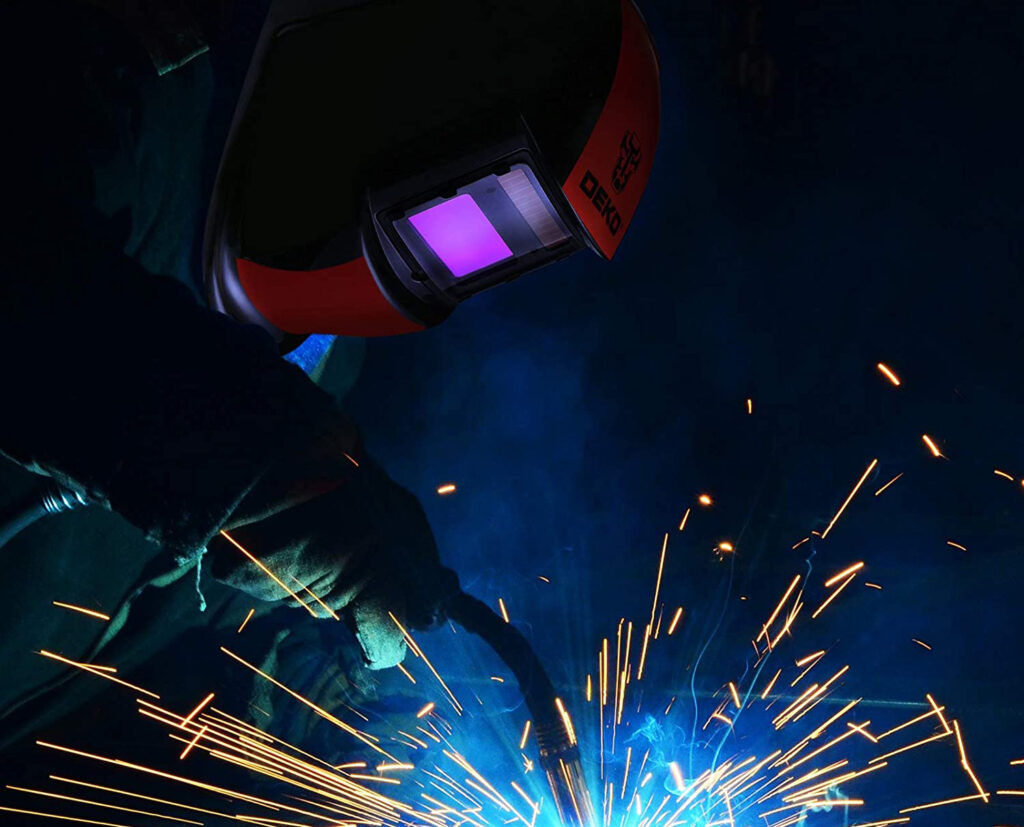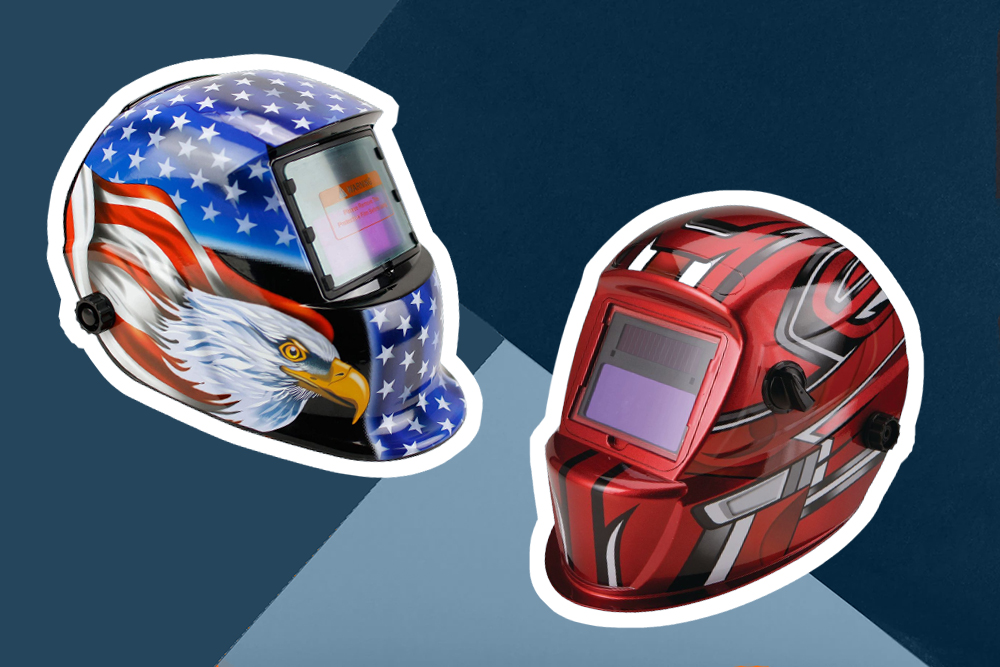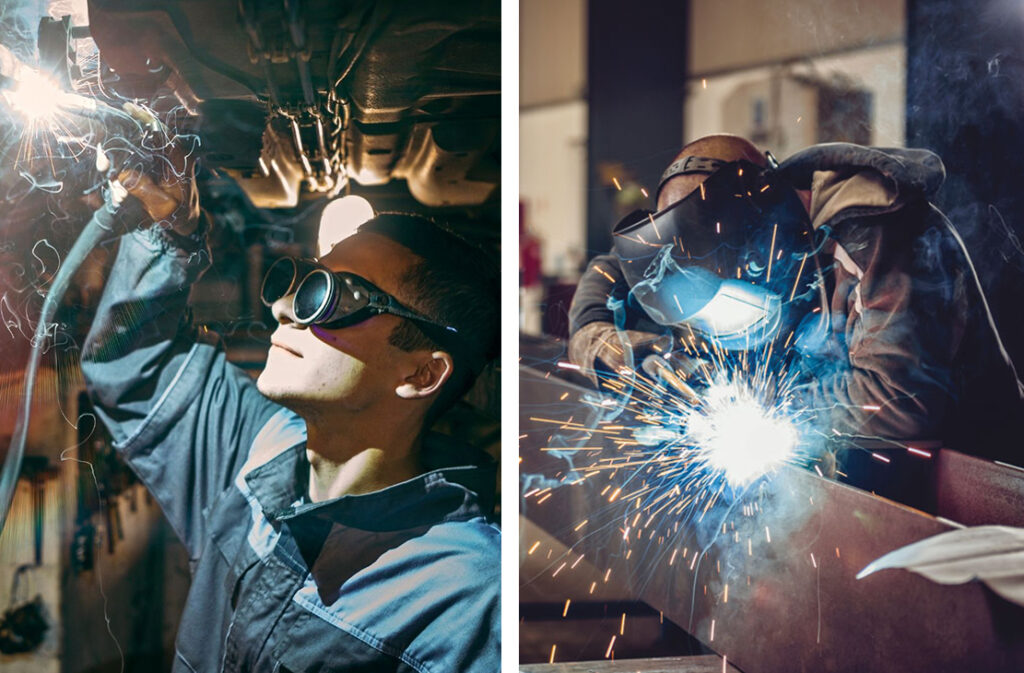

A helmet is probably the most important piece of equipment for a welder. The safety gear protects you from infrared light, ultraviolet rays and objects that could hit you. There are different types of welding helmets, and having the wrong one can affect your productivity as well as put you at risk. These helmets come in different designs for different kinds of welding tasks and personal preferences.
The ideal helmet should be solid to withstand impact and comfortable to prevent it from causing neck pain or limiting your movement. It should also be able to provide optimal protection for you when welding. One way to ensure that your welding helmet will keep you safe is to find a helmet that adheres to ANSI standards. ANSI requires filter lenses on welding helmets to protect you from heat and light radiation. Our comprehensive guide explains the various types of welding helmets available so you can choose the right one that will suit your budget, individual style and the intended task.
110V stick welders are protective devices against burns and electric shocks. Welding helmets are also safety devices that protect you against infrared, flying objects and ultraviolet rays. Let us discuss the different types of welding helmets and the projects they are best for.
Auto-darkening welding helmets are comfortable, flexible and user-friendly, making them one of the best welding helmet styles for beginners. One of the most useful features of this type of helmet is the auto-darkening filter that is positioned near the lens. It has light sensors that detect an arc and its light intensity, and then adjust the LCD display accordingly by automatically darkening it to protect your eyes from welding flashes. This speeds up your performance because the automated lens does not require constant adjustments as is the case with passive welding helmets.
These helmets that include Hobart 770890 are designed with a clear view that allows you to survey your working environment, and the lens only darkens automatically when you hit an arc. The level of lens darkening is directly proportional to the light intensity an arc emits. Auto-darkening welding helmets are efficient because they save time since you don’t have to manually switch the lens for different types of welding materials. Their disadvantage is their high cost since they are the most expensive types of welding hoods.
Solar-powered welding helmets are cost-effective because they use a fixed battery that does not require replacement since it uses solar energy to recharge automatically. A good example is YESWELDER Large Viewing Welding Helmet which features a rechargeable lithium-ion battery, 4 sensors and a broad range of shades that are suitable for MIG MMA and TIG applications. It is a protective device that would work well with a 220V MIG welder that provides high power for versatile welding projects.
Solar-powered welding helmets are the most economical types of welding hoods because they save energy by switching off the lens automatically if they are not in use.
The helmets are suitable for outdoor welding tasks because they recharge in sunlight. This can be a disadvantage in cloudy climates because they would not work unless they are, or have been, directly exposed to the sun for an extended period to charge fully. Besides the hassle of charging them, solar-powered welding helmets deplete their charge fast and could also get too hot during operation.
If you read user reviews of the different types of welding helmets, you will find that passive welding helmets are considered the safest. They feature solid construction that is durable and will effectively protect welders from extreme heat, ultraviolet rays and flying objects.
These helmets are available with a single fixed lens that is shade 10, or shade 11 like Viking Industrial Passive Black Welding Helmet, or shade 12.
This is not a modern helmet with advanced features. The lens is always dark and welders have to remove it to have a clear vision and inspect your work. This can be tedious and slow you down. That is why it is more suitable for professional welders who do not need to constantly inspect their work because they know the drill. Passive welding helmets are also lightweight, inexpensive and a great choice if you are on a budget. You can purchase different lens shades for different welding jobs. Here is a shade number guide Trusted Source California Code of Regulations, Title 8, Section 3382. Eye and Face Protection. (a) Employees working in locations where there is a risk of receiving eye injuries such as punctures, abrasions, contusions, or burns as a result of contact with flying particles, hazardous substances, projections or injurious light rays which are inherent in the work or environment, shall be safeguarded by means of face or eye protection. Suitable screens or shields isolating the hazardous exposure may be considered adequate safeguarding for nearby employees. www.dir.ca.gov for filter lenses used for welding.
Among the different types of welding helmets are battery-powered products. These helmets typically use lithium batteries that are either rechargeable or replaceable. Although solar-powered welding helmets are more economical because you don’t have to replace the battery, professional welders favor battery-powered helmets because they are ready to use anywhere. The batteries are easily available, have a long runtime, and you can purchase a spare battery pack for quick replacement to avoid downtime when working on long welding projects.
Another plus for battery-powered welding helmets like TOOLIOM Welding Helmet is the auto-darkening function that changes the shade of the lens according to the intensity of the emitted light to protect your eyes against radiant energy.
For battery-powered helmets that use rechargeable batteries, we recommend removing the batteries from the helmet after every use to recharge them. Otherwise, they could discharge if you keep them in the helmet.
The main drawback of some battery-powered welding helmets is the extra cost of replacing the batteries.
Welding helmets with variable shade lenses are suitable for a variety of projects that use different materials, and they are among the best welding helmet styles for professional welders. One of their most outstanding features is their lens which is capable of protecting your eyes against all levels of brightness emitted when you strike an arc. It achieves this by automatically adjusting the shade of the lens according to the light intensity so you won’t have to adjust the lens manually for different welding jobs. By automatically darkening in response to intensive light, welding helmets with variable shade lenses also improve your visibility in addition to protecting your eyes.
These helmets are considered among the safest types of welding hoods and they have various shade variations you can choose from for diverse welding processes and materials. You could set variable shade #8 – #13 to accommodate any welding task.
A good example of a welding helmet with variable shade lenses is ArcOne S240 DUO which boasts of a high definition clear view, auto-darkening feature and two independent sensors.
As the name suggests, fixed-shade lens welding helmets feature a single lens that does not adjust to different levels of light intensity because it is fixed. The majority of them, including Forney 55673, come with a conventional lens with shade level 10 although you will find some helmets with shade 12.
They do not have auto-darkening filter. However, they are suitable for specific welding jobs that involve one type of material and amperage that will not require you to adjust the lens. We also recommend them for simple or DIY projects such as repairing your iron gate.
Although they are not as common as other welding helmet styles, fixed-shade lens welding helmets are affordable and would be a great choice for newbies and small welding tasks. They are also made of durable materials. Their main downside is the inability to switch between various shades for varied welding processes.
There are various welding methods that you can use for different tasks. For instance, a welder for roll cages would be suited best by TIG and MIG welds because they create the most lightweight assembly with a sound structure. Similarly, there are various types of welding hoods that are designed to accommodate diverse projects. These helmets protect the wearer against radiant energy emitted when you strike an arc. According to the Occupational Safety and Health Administration ( OSHA Trusted Source Eye Protection against Radiant Energy during Welding and Cutting in Shipyard Employment Electromagnetic energy given off by an arc or flame can injure workers’ eyes and is commonly referred to as radiant energy or light radiation. www.osha.gov ), helmets should have filter lenses with a shade number that will effectively protect your eyes when welding. We have reviewed the different types of welding helmets you can buy for specific or varied tasks. We have included helmets with fixed shade lens for particular jobs and helmets that allow you to switch shades for different welding applications.
